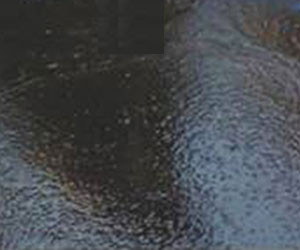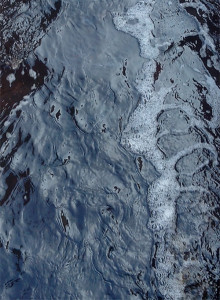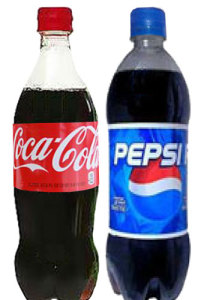Cooling water is used in any kind of industry and trouble in a cooling water system affects the operation of the whole production plant as well as the system itself. Therefore, the suitable quality of the cooling water must be controlled so that trouble free operation may be ensured.
Problems in cooling water system and their prevention
Problems commonly encountered with cooling water are
- Corrosion
- Scaling
- Fouling
Cooling water corrosion
Corrosion is the destructive attack of a metal by chemical or electrochemical reaction with its environment. Corrosion can be viewed as the process of returning metals to their natural state – the ores from which they were originally obtained. Corrosion entails the conversion of a metal from the atomic to the ionic state, with the loss of one or more electrons. Corrosion of metals in water involves electrochemical reaction of the metal in presence of dissolved oxygen. The basic reactions of the electrochemical corrosion of carbon steel (the most widely used material for heat exchanger) are given below:
Anodic reaction Fe → Fe2+ + 2e–
The electrons that are released flow through the steel, as they do through the wire of a galvanic cell, to a cathodic region where they react with dissolved oxygen.
Cathodic reaction O2 + 2H2O + 4e– → 4OH–
The Fe ions formed in the anodic region travel to the cathodic regions through the water adjacent to the steel, just as ions travel through a salt bridge in a galvanic cell. In the cathodic regions Fe2+ ions react with oxygen to form Ferrous hydroxide.
2Fe + 2H2O + O2 → 2Fe2+ + 4OH– → 2Fe(OH)2
Ferrous hydroxide precipitates from solution. However, this compound is unstable in oxygenated solutions and oxidized to the ferric salt (rust)
2Fe(OH)2 + H2O + O2 → 2Fe(OH)3
or Fe2O3 + 3H2O (corrosion products)
The anodic reaction cannot proceed without a corresponding cathodic reaction, which is a reduction process.
Effects of cooling water corrosion
- Reduction of the efficiency and life time of heat exchanger
- Interruption of production and contamination of products
- Accident due to sudden failure of cooling system
- Reduction of the strength of material
- Reduction of the flow rate of water
- Increased cost of maintenance
Factors influencing corrosion in cooling water system
- Dissolved salts
- Dissolved gases
- Water temperature
- pH of the cooling Water
- Flow rate of water
- Deposits/Fouling
Control of cooling water corrosion
- Changing corrosion environment
- Removing aggressive components from cooling water
- Using corrosion inhibitors in cooling water
Cooling water corrosion inhibitors: A corrosion inhibitor is a substance which when added in small concentrations to a corrosive environment decreases the corrosion rate.
Principles of cooling water corrosion inhibition action
Corrosion inhibitors for cooling water system are water soluble; however they form insoluble films on metal surfaces. This film is called protective film and inhibits corrosion reaction by preventing the hydration of metal ions or reduction of dissolved oxygen on the metal surface. An inhibitor becomes effective only after its concentration in water reaches a certain level. The minimum concentration required for an inhibitor to become effective is known as its critical concentration. Thus, a critical concentration must be maintained constantly if an inhibitor is to exhibit the desired effect.
Classification of cooling water corrosion inhibitors
- Oxidized film type: Chromates, Molybdates, Nitrites
- Precipitated film type: 1. Submerged ion type: Poly phosphate. Zn salt, phosphonets
2) Metal salt type: Triazol, Mercapto benzotriazole - Adsorption film type: Amine, surfactant- organic products
- Mixed inhibitors: Zn/chromate, Zn /polyphosphates, Zn /phosphonates
Cooling water Scaling
Scaling is the formation of thick layer on metal surface of suspended or dissolved substances in cooling stream by means of different physical and chemical action.
Sources of water scale
Scale usually consists of calcium carbonate, iron oxides and sulfides, silica, calcium phosphates and sulfates etc. The sources of water scale are as follows:
- From soluble constituents in water
- From treatment products
- From soluble contaminants in the air
Ca2+ + 2HCO3– → CaCO3 + H2O + CO2
Mg2+ + SiO2 → MgSiO3
Ca2+ + SO42- → CaSO4
Ca + 2PO43- → Ca3(PO4)2
Zn2+ + 2PO43- → Zn3(PO4)2
H2S + CrO42- → Cr2O3
H2S + Fe2+ + FeS
Mechanism of scale formation
Initially a very thin layer of the scale components is formed on the metal surface. Gradually crystal nuclei are formed from the numerous microcrystals to glow the crystal grains. The coarse grained crystals are then coagulated to promote the formation of scale. The solubility product of the dissolved ions, temperature, pH of the cooling stream and corrosion product are countable factors for scale formation in the heat exchanger.
Effect of scale formation
Since the thermal conductivity of the scale is extremely low in comparison with that of the tube material, the scale adhesion remarkably lowers the thermal efficiency of the heat exchanger. Excessive scale growth in the tube may clog them. Cooling water scale also accelerates the corrosion on the metal surface. Effects of scaling are as follows:
- Reduced heat transfer
- Loss of cooling capacity
- Restriction of water flow
- Obstruct spray nozzles
- Acceleration of corrosion
Results in:
– Reduce System efficiency
– Production loss
– Unscheduled emergency equipment shutdown
– Increased-pumping energy cost
– Increased maintenance cost
– Increased wastewater treatment costs
Factors effecting scale formation
– Calcium and carbonate ion concentration
– pH of cooling water
– Water temperature
– Flow rate
– Dissolved salts
Control of water scale formation
Scale formation may be inhibited or controlled by taking the following measures
– Removing the hardness from the water using a water softener
– By adding scale inhibitors to the cooling stream which enlarge the solubility of the hardness salts
– By avoiding excessive temperature difference
– By adjusting pH of the cooling stream
– By keeping low concentration of suspended materials/ions in the cooling stream which the hardness salts can remain soluble.
Scale inhibitors
These are substances which when added to a cooling water system prevents the formation of scale on metal surfaces.
Mechanism of scale inhibition
Scale inhibitors present the scale formation by the following way
– Prevents the formation coarse grains of deposits
– Prevents coagulation of crystal grains
– prevents the formation of coarse grained crystals by distorting the crystal surface of the scale forming crystal nuclei.
Chemicals used for scale inhibition
– Poly phosphates, phosphonates, sulfonates, phosphate esters
-Synthetic polymer, polyacrylates, polymetltacrylates, maleic anhydride copolymers.
Fouling
Fouling is the formation of deposits of foreign materials on heat transfer surface of heat exchanger and other cooling equipment.
Types of fouling
– General fouling: porous deposits, dirt, silt, Sand, corrosion products
– Microbiological fouling: algae, fungi, Bacteria, Slime
Effects of fouling
– Loss of heat transfer
– Plugging pipe lines, heat exchanger
– Acceleration of corrosion
– Loss of cooling capacity
– Restriction of water flow
– Obstructs spry nozzle
– Increased-pumping energy cost
– increased maintenance cost
Control of fouling
– By adding inhibitors to cooling water
– Maintaining optimum velocity of cooling water (3-10 ft / sec )
– Minimizing suspended materials by filtration
– Using chlorine, slimicides or biocides
Factors influencing the slime formation by microorganism
– Water temperature
– pH of cooling water
– Nutrients in cooling water
– Dissolved oxygen
Monitoring of cooling water treatment
– Corrosion rate measurement with test coupons
– Corrosion rate measurement with corrosion meter
– Corrosion monitoring by using heat exchanger
– Estimation of scale inhibitor effect by water quality analysis
– Measurement of scaling rate by using monitor heat exchanger
– Monitoring of the prevention effects of slime adhesion and sludge accumulation.


